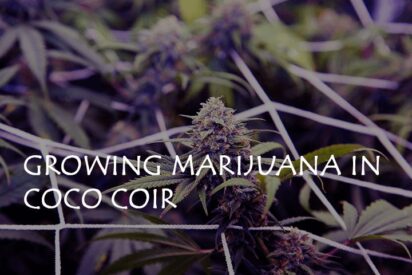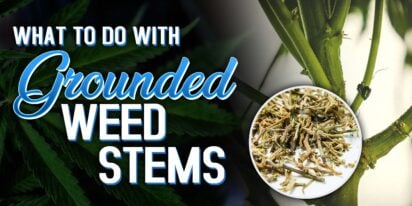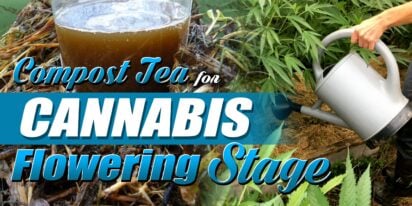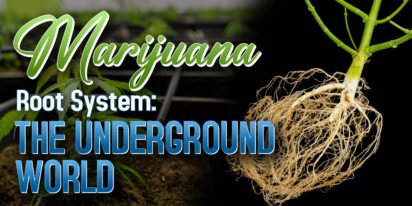
Are You 18 Or Over?
YesOr
No By clicking yes, you certify that you are over 18. By using this website, you agree to our legal disclaimer.605+ Cannabis Strains over 20 Breeders worldwide.
Table of Contents

Growing your cannabis in coco coir is a great budding trend and an alternative to growing medium. Coco coir is an excellent growing medium for your marijuana plants. If you’re looking for the great benefits of hydro for faster growth and higher yield with the experience of soil cultivation, coco coir is your best option. If you’re a novice grower, you’ll find coco coir cultivation easy to learn.
However, the coco coir most cannabis growers use comes in dehydrated bricks without instructions. That’s why you need a comprehensive guide to ensure you use coco coir correctly to obtain the best results. At the end of this guide, you’ll be able to start adding coco coir in your cannabis garden confidently. Are you ready to learn about coco coir cannabis cultivation? Let’s get started!
Yes, you’re right if you believe that coco coir comes from coconut husks. The fibers from the coconut husk are processed and recycled. Coconuts are mostly grown in Sri Lanka, India, and the Philippines. Coco coir is sold like soil in 50L sacks from grow shops, and readily available in coco bricks which are tightly compressed.
Coco coir is a fantastic growing medium for marijuana plants both outdoors and indoors. In fact, it started replacing peat moss in potting mixes. The pH level of coco coir is comparable to unfertilized soil (6.5 to 7.0). You can use it as a growing medium or mix it with soil to loosen the soil and resolve compaction. Coco coir makes a superb soil mix. You can mix it with 30% of airy amendments, like perlite. The environment is suitable for marijuana roots to survive because the coco coir provides the nutrients they need through the water.
1. Mimics Soil Cultivation
When growing cannabis in coco coir, you can treat it like you’re growing in soil. Because coco coir is considered a soilless growing medium, you’ll feel like actually growing your marijuana plants in soil. You can keep your cannabis plants in regular pots, and you just simply need to water your plants with nutrient water.
2. Nourishes the Root System
One major advantage of using coco coir is its capability to hold moisture and nutrients effectively. The root system of your cannabis plants can benefit from the lighter texture of coco coir because it holds more oxygen.
3. Prevents Underwatering
Say goodbye to underwatering with coco coir! Even if you’re out for a few days, your cannabis plants can survive with a coco coir medium. The coco fibers can hold more water than soil.
4. Environment-friendly
In the past, coco husk was only discarded and even burned in the landfills. Only a few gardeners utilize coco husks for agriculture purposes. Luckily, we are now more open-minded, resourceful, and concerned about our planet. Coco coir is slowly broken down and you can use it more than once. Coco coir is highly sustainable, unlike peat moss. You don’t have to replace coco coir every grow.
5. Doesn’t Attract Pests
Coco coir, unlike other growing medium, doesn’t attract pests that can affect your plants negatively. Growing marijuana in coco coir is less likely attacked by bugs or pests.
6. Cannabis Plants Grow Fast
Growing directly through hydroponics can be complicated, most especially for a new grower. If you’re not comfortable using a hydroponic medium, you can still obtain the benefits of hydroponics with coco coir. As compared to growing cannabis in the soil, your plants will grow faster with coco coir. The reason is that nutrients are provided readily in the root system, making them more accessible. It only means that the roots do not have to look for nutrients, so it saves their energy and uses it to grow to be healthier and bushier.
1. Provide nutrients from the start. As an inert growing medium, coco coir has no inherent nutritional value. That’s why you need to provide nutrients throughout the grow. Monitoring pH is also a must because the pH level dictates the capability of the root system to absorb nutrients.
2. Use a Cal-Mag Supplement. Marijuana plants that are grown in coco coir need more calcium as compared to soil and other growing mediums. That is why a standard “Cal-Mag” supplement is highly recommended to ensure that your cannabis plants will get all the calcium and magnesium they need. Magnesium aids in the proper absorption of calcium.
3. It’s important to re-hydrate coco coir first because it comes in dry bricks. Pre-made mixes are also available with coco coir, which are specifically formulated for cannabis plants.
4. Mixing the coco coir with perlite is a good idea. It provides a sufficient amount of air and water for cannabis roots. It drains well so overwatering is avoided.
5. Iron is a micronutrient that is missing in coco coir, and iron deficiency may reduce your final harvest. Starting with coco specific nutrients is important so you won’t need to troubleshoot later.
6. Use less fertilizer because coco coir holds fertilizer effectively too.
2 650 grams coco coir bricks
8 quarts bag of perlite (found in garden stores)
5-gallon bucket
10-gallon fabric container
Drain
Water
You can run your fingernails on a bar of soap. The layer of soap will prevent the coco coir from getting stuck under your fingernails. It will save time and effort to clean your nails once you’re finished.
1. Gather all the materials you need and place them near your sink or tub.
2. The inside of the 5-gallon bucket should be lined with a fabric container, all the way to the top. It’s good to have enough extra so you can easily grab the top and lift it up later.
3. Add the first coco coir brick to the fabric container in the bucket.
4. The bucket is now filled with water until half full.
5. Before soaking the coco coir, adding a Cal-Mag supplement is beneficial to provide nourishment to the roots system. Supplementing the coco coir now will save you time and avoid issues later on.
6. Make sure that the water pH is 6.0 before soaking. You can use a pH meter to ensure an accurate result. It will ensure that your coco coir has the right pH range from the start. Remember that the pH level will reflect the capability of the roots to absorb nutrients and oxygen.
7. Wait until the coco coir is fully hydrated (about 8 to 10 minutes). There shouldn’t be hard parts left. To check, stick your hand on the coco coir. Make sure that the coco coir is soft all the way. You can use your hands to mix the slurry around and break up quickly if you are in a hurry. Some growers prefer to soak their coco coir longer, most especially if they are using pH-ed water. Also, they do it if the coco coir has been supplemented with Cal-Mag. It gives the coco coir more time to absorb the nutrients.
8. Pull the liner up and let the water drain. Allow the excess water to drain first, then place the fabric liner with the slurry on the ground or tub to allow the water to drain slowly.
9. Pour the half bag of perlite (8-quart) on top of the coco coir.
10. Now, it’s time to mix in the perlite with hands. Slowly mix everything. Also, check around the side because you will often find straight coco coir or pockets of perlite in this area. Stick your hands inside and mix everything until it looks even.
11. Fill the containers with cannabis potting mix. A single batch makes approximately 5 gallons of cannabis potting mix. It may appear soaking wet, but it will eventually dry in the fabric containers once you let a fan blow over them in the grow tent.
12. Repeat the steps for the second coco coir brick and the remaining half of the perlite bag.
13. You’re set! You can fill the rest of the fabric containers and solo cups for your marijuana seedlings. Cutting holes into the bottom of the solo cups will allow water to drain after you have watered your cannabis plants. Test it to ensure the water runs through the cup freely.
It is now time to start growing since you already have your potting mix ready. Whenever you are using liquid nutrients, you need to test the pH so the roots of your cannabis plants will easily absorb nutrients. Invest in a reliable pH test kit. Give a full strength Cal-Mag in addition to your nutrients for two weeks at the start of your grow.
1. Germinate the Cannabis Seeds in Rapid Rooters for the best germination rate. Avoid soaking the coco coir in the solo cups. You can also plant the Cannabis Seeds directly in your ready coco coir.
2. When your marijuana seedlings grow their first set of serrated or real leaves, you can water them with nutrients (normal seedling strength). You can also add a Cal-Mag. Water the seedlings until you get 20% runoff from the bottom of the container or solo cups.
3. Maintain your cannabis seedlings. You can choose to plant directly your cannabis seedlings in their final container or solo cups. The seedlings should get plenty of light. However, make sure that the light is not too hot for your cannabis seedlings. To test, place your hands directly where your marijuana seedlings are and then wait for 10 seconds. If it feels too hot, it’s the same with your plants.
4. When watering your cannabis plants, continue to give water until 10 to 30% extra water runs out of the bottom. Do not water until the top inch starts to feel dry to touch. Make sure that the water should drain freely. If not, you need to fix it right away. Make a room for new seedlings by digging small holes in the coco containers. Use a butter knife and slide it carefully around the solo cups’ edges.
5. Once the seedlings have 3 sets of leaves, you need to transplant them to bigger containers if you started with solo cups.
6. Maintain your vegetative marijuana plants until they’re half your final desired size. You can start training during this stage. Make sure to wait for a few days after transplantation so the plants won’t get stressed before training. If you’re growing auto-flowering cannabis plants from seed, do not use any training techniques besides low-stress training or LST.
7. Watch out for nitrogen deficiency. It is characterized by yellowing of the lower leaves starting from the bottom upwards. Your cannabis plants need a higher amount of nutrients. The yellow leaves won’t turn green again, so don’t expect it to happen when treating nutrient deficiency.
8. Once your plants reach half your desired size, switch them to the flowering phase. Autoflowering plants will automatically switch to the flowering stage after 3 weeks, which lasts until the plant is about reaches the half your desired final size.
9. When switching to the flowering phase, change the light schedule to 12 hours of light and 12 hours of uninterrupted darkness. You don’t have to do anything with autoflowering plants.
10. Maintain the flowering plants until they’re ready to harvest. Control humidity and temperature. Watch your cannabis plants closely to expose all bud sites to adequate light.
11. Harvest the cannabis buds when they are ready.
Coco coir generally drains better, keeping the roots oxygenated as compared to standard peat-based mediums. From the start, a light nutrient solution should be applied similarly to a hydro crop. The pH should be 6.0 to ensure proper coco coir nutrient absorption for the root system of your cannabis plants. You can add 30% perlite to the mix for the best results. You can use premixed coco coir which is available in online grow stores. One way to ensure a successful coco coir cultivation is to buy a high-quality coco coir brick. Enjoy growing your cannabis in coco coir today!

[ez-toc] In indoor gardening, maintaining an optimal temperature within your grow tent is crucial for the health and productivity of your plant

[ez-toc] Welcome to the delightful world of cannafudge crafting, where sweetness meets sophistication, and cannabis infusion adds a unique twis

[ez-toc] You’ve finished trimming your weed, but what about those leftover stems? Don’t throw them away! These seemingly useless bits can a

Feeling high can be an exhilarating experience, but it's essential to make the most of it by engaging in activities that enhance the sensation a

[ez-toc] Starting with planting cannabis seeds might seem simple, but how deep should cannabis seeds be planted for them to grow well. In this

[ez-toc] In the realm of cultivating cannabis, maximizing growth during the flowering stage is a top priority for growers. While various method

[ez-toc] Nutrient burn is a common issue among plant enthusiasts, often resulting from over-fertilization or improper nutrient application. It

[ez-toc] Welcome to our complete guide to dealing with harmful pathogenic mold in cannabis. For those who grow cannabis, preventing mold is vit

In recent years, there has been speculation about “did Shakespeare smoke weed?” This idea originates from a study by South African anthropol

[ez-toc] Welcome to the hidden world beneath the soil – the inside of the marijuana root system. While the vibrant leaves and resinous flower

Are You 18 Or Over?
YesOr
No By clicking yes, you certify that you are over 18. By using this website, you agree to our legal disclaimer.